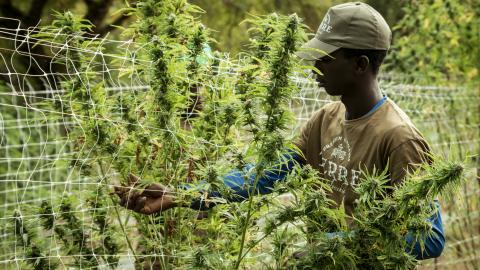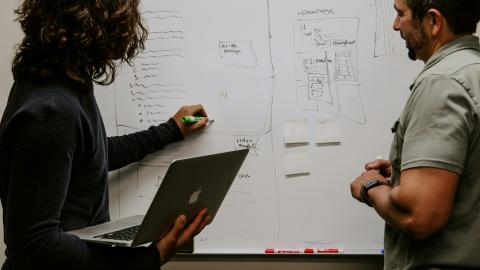
September 26, 2016

"How did I get into marijuana research?", asks Max Chmielinski, a Northwest Center Exposure Sciences and Industrial Hygiene MS graduate who is now pursuing a PhD, "This is a story of being the lowest ranking employee."
"I was the UW intern working for the Washington State SHARP program during the 2015 summer. The same week I started, the marijuana growers association came to SHARP and asked for a site assessment. SHARP concluded that many exposures in this industry are different from any other industry. Exposures of interest included UV light, CO2, CO, inhalation of plant spores, and dermal exposure to plant oils.

Since no one at SHARP could provide expertise across all exposures of concern, they gave the project to the intern. A literature review revealed that very little prior research has been performed on indoor UV light and chronic CO2 exposure. As a mechanical engineer, I was most familiar with UV radiation, and began to dig into this exposure. At the end of the summer, an exposure assessment on UVA, Broadband UV, and blue light was performed with SHARP.
Upon arrival back to school, I had a meeting with my preceptor, Dr. Edmund Seto, to discuss how to build my thesis. I presented him with my summer work. In 3 minutes he was on board and we began planning data analysis and further research into worker schedule and personal protection equipment."

Little is documented for UV exposure to ‘grow’ lights used by indoor farms as well as the cannabis industry. The purpose of Max's thesis was to characterize UV light exposure for the eye in nursery and grow rooms in two medical cannabis production facilities using area and personal sampling.
Max assessed three different light spectrums: UV-Broadband (180 to 400 nm), UVA (315 to 400 nm) and visible light (400 to 700 nm). Area surveys were accomplished by consecutively mounting spectral sensors on a tripod at a fixed height of 1.6 meters and taking instantaneous measurements throughout the facility. In grow rooms, the tripod was systematically moved between 32 to 36 locations; in nurseries samples were taken from 4 to 6 locations.
Personal sampling utilized sensors consecutively mounted on a helmet worn by the worker. In each facility, one worker wore each sensor for 20 minute periods in the grow room. Occupational and nonprescription sunglasses' effectiveness were calculated by applying sunglasses reduction graphs, taken from manufacturer and previous literature, to exposure values. Because researchers did not have worker scheduling information, they investigated scheduling control via a scenario model.
Max and his fellow researchers found that in both area and personal sampling, the American Conference of Governmental Industrial Hygienists (ACGIH), Threshold Limit Values (TLVs) for UV Broadband exposure was exceeded.
For area sampling in grow rooms, 12% of samples exceeded the UV Broadband TLV of 0.003 J/m2 in under 8 hours, and all area nursery room samples exceeded this TLV.
Personal grow room sampling in the UV Broadband spectrum did not exceed the limit over a 20 minute sampling interval, but the worker would be projected to exceed the TLV in 446 minutes (less than an 8 hour shift).
No sample from any facility or room type exceeded the ACGIH TLVs for UVA or visible light. Use of occupational sunglasses indicates exposure will not exceed the TLV in under 24 hours even if the highest measured exposure was constant, but it is unclear if use of some sunglasses models will allow under TLV exposures for 8-hours.
The scenario model for worker scheduling indicates that scheduling control can be effective to reduce exposure, but it is based on weak assumptions due to limited personal sampling data.
Max concluded that additional assessment, particularly personal sampling, is needed to more fully characterize cannabis workers’ exposure to UV light. Further research is needed to establish validated UV light sampling methods, to examine the effectiveness of protective equipment, and to establish employer best practices.
DEOHS was awarded SHIP grant with a proposal that was inspired by Max's MS thesis in June 2016. The grant will support the first half of his PhD work, where he will continue looking into occupational exposures in marijuana growing facilities.




